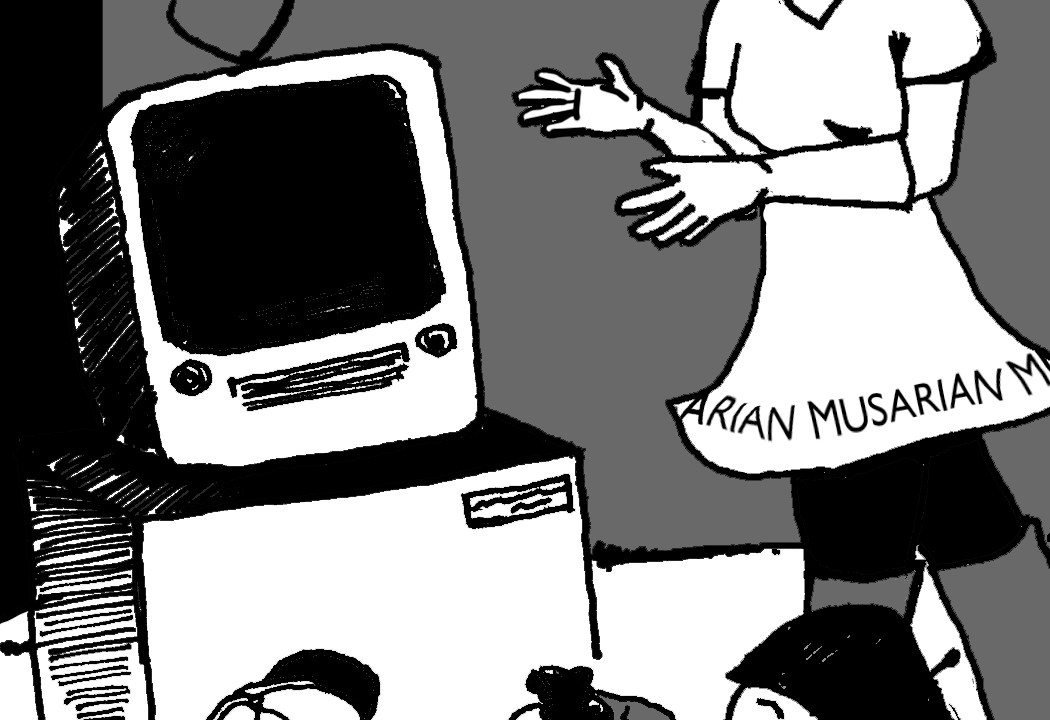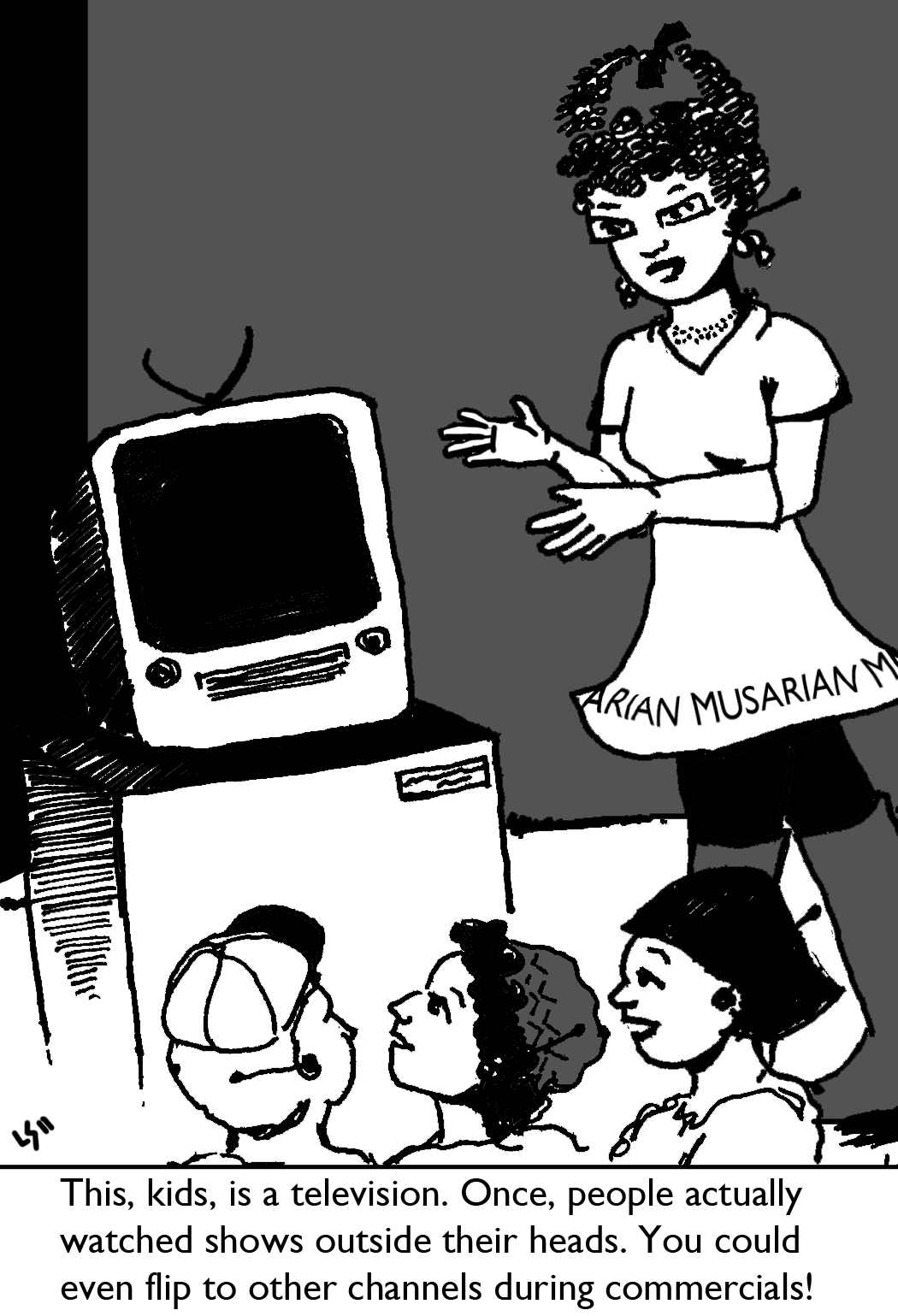
In today’s guest post, AAM staffer Lauren Silberman, continues her exploration of the entwined futures of libraries and museums. Her first, massively popular post, speculated on what museums can learn from librarians of the future.
What would you get if you crossed a museum professional with a librarian?
Would the baby be locked in an eternal struggle of touch/don’t touch the materials—unsure if they should let other kids take the toys out of the toy chest or not? As a teen, would the child rebel and do some sort of massive “information cleansing” to release all the stories, histories and provenance collected from their predecessors from their memory? Or would the kid, being a child of our quick change, techno-magic society, become something far different than what we imagine someone working in a museum or library today? As Elizabeth points out in this video, the iPhone doesn’t have much in common with its Alexander Graham Bell ancestor. Many people don’t even use it as a phone anymore. In the future, what we now call museums, libraries, community centers, studios and schools could all be bundled into one thing called a museum. Or a library. Or a librarium. Maybe even a schoorarium center. Would it be anything like the original institutions? What would the musarians who work in these institutions be like?
I imagine that a musarian would be one-part security guard, one-part receptionist with a good chunk of information wizard thrown in. A cheery, welcoming but ultimately reserved Doctor Who-ish figure that helps others navigate our precious, collective heritage while opening the doors to new ideas. In a world where more and more content is born-digital, they would be the gatekeepers of our tangible history and tour guides of the technological frontier. While they may work in a good ole fashioned brick-and-mortar institution, they would be instantly available in anyone’s home, office or school, whether in some sort of holographic device or, more likely, through an avatar that blends their individual characteristics with their institution’s brand. I imagine they would provide personalized, customized services, born out of the considerable research they’ve undertaken. A visitor or group could still tour a historic structure or view actual artwork, but their experience might be hyperlinked with layers and layers of information provided by the musarians—as well as by the general public. I think this would make people value “actual” items in community-based digital centers even more highly. Maybe the public’s experiences with the materials would be supplemented with technology, such as gloves that replicate the feeling of touching the object—enabling us to issue the directives “touch” and “don’t touch” at the same time.
So, what do you think? Who will be the museum professionals of tomorrow? Will they be musarians as described above or something completely different? Contribute your descriptions below.









Interesting post. I'm currently working on my MA in Museum Studies through JHU and many people in our program are from libraries or archives departments. I used to work for a research library, while juggling museum internships. There is a lot of overlap and similarities, so I wouldn't be surprised if there will be or is a dual program for a library science and museum studies program.
Samantha – Mus(eum)ings
http://museuminternmusings.blogspot.com
http://twitter.com/#!/museumings
It sounds to me like Lauren is describing both the future and the deep past: an institution that combines the attributes of "museum" and "library" and "place of learning" and "place of discussion," like the Μουσεῖον at Alexandria.
I think there is some evidence of musarians already. Librarians especially in public libraries already exhibit some of these characteristics. Wouldn't it be great if library and museum courses were more integrated.
I love the idea of creating shared space and resources.
Interesting post and good reflections and aspect on museum/library as an information service. An important aspect is also the museum as entertainment. People also visit museum to have and share an experience – I am sure museum is different from archive and library at this point. Is there enough entertainment in a musarian or will the focus be in the sharing possibility of content.
You'd be surprised how many of us there are! Librarians, archivists, and information specialists are no new feature to museums, but it has been a hot topic of late and it does seem that museums are realizing more and more that they need to operate a bit more like libraries when it comes to information preservation and access. There are a wide range of careers in museums that are not only appropriate for "library school" graduates, but also require MLS/MLIS (library/library and information) degrees. These careers range from actual museum librarians to collections information specialists to database administrators to catalogers to archivists and on and on and on and on. A handful of MLIS programs do, indeed, offer dual-degree options or concurrent Museum Studies certificates.
I think Musarians have been around for a long, long time. I am about to do a blog on the permanent displays in Dallas at the downtown Dallas Public Library which include:
well, actually to many to include but for one thing one of about 25 extant broadside copies of the Declaration of Independence, which was printed at John Dunlap's print shop in Philadelphia on July 4, 1776.
All Presidential Libraries are also museums. I really think this represents an established tradition, just not generally recognized — and one reason for that is the fact that there are just too many librarians for the market and too many museum curators for the market.
IDK, maybe too many everything for every market, but these markets are particularly crowded.
I hope I can post a link to my blog on the Dallas Library == Museum Quality Exhibits.
http://consolidatedworldmedia.com
http://leeanntorrans.info